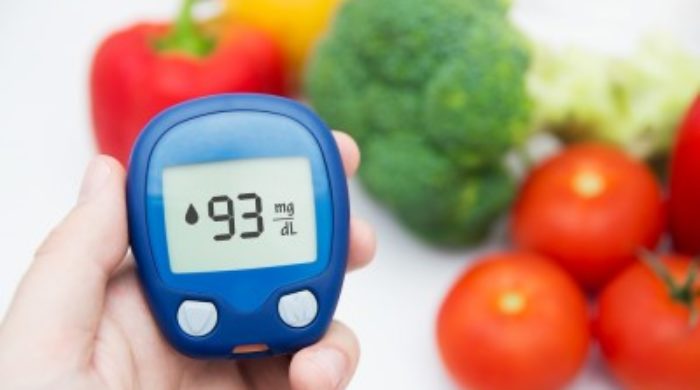If you or someone you know needs to keep a close eye on their blood sugar, you may have been exposed to the term ‘blood glucose monitoring’. But are you familiar with the ‘why’ and ‘how’ behind the practice of blood glucose monitoring? With 29 million Americans living with diabetes, and 5-10% of women getting gestational diabetes during pregnancy, it’s smart to understand what blood glucose monitoring is, and why it’s important.
Importance/Role Of Glucose In The Body
When food breaks down in the body, much of it gets converted into energy in the body. Certain foods break down to provide your body with glucose energy. While some tissues can use fat and protein as an energy source, others, such as the brain and red blood cells, can only use glucose, making it important for healthy functioning of the body.
When you eat, glucose levels in the bloodstream spike and a hormone called insulin is released to rebalance the glucose levels in the bloodstream. Insulin does this by acting as the key to open cells for glucose storage. Glucose storage enables the blood glucose levels to normalize and gives the body a backup supply of glucose to use when blood glucose levels drop. When blood glucose levels are low, stored glucose gets released back into and through the bloodstream. The balancing and rebalancing of blood glucose levels are reliant on the hormone, insulin.
Glucose And Diabetes
Problems arise when glucose levels in the bloodstream aren’t balanced. When the body has trouble managing blood glucose levels, it’s commonly referred to as diabetes. There are two common reasons why the body struggles to maintain balance.
Type 1 Diabetes: When a patient has type 1 diabetes, it means that the pancreas isn’t able to produce enough insulin to balance out glucose spikes in the bloodstream. Often, this is due to the immune system destroying the pancreatic cells where insulin is made, which makes it harder for the pancreas to produce enough insulin.
Type 2 Diabetes: When a patient has type 2 diabetes, their body doesn’t have trouble producing insulin, but their cells don’t respond how they should to insulin. This leads to an overproduction of insulin and eventually leads to the pancreas being overworked, damaged, and unable to make enough insulin to meet the body’s demands.
Gestational Diabetes: When women are pregnant, their bodies become focused on providing nutrition for the baby. Because of their shift to preserve glucose for nourishment, they can become resistant to insulin. For many women, their bodies respond by simply releasing more insulin during pregnancy. For others, their pancreas can’t keep up with the demands of their body during pregnancy. As a result, they suffer from spikes in blood glucose during pregnancy or gestational diabetes.
Dangers Of High/Low Blood Glucose
High Blood Glucose (hyperglycemia): When you eat, your blood glucose levels spike until they can be normalized with insulin. When someone has diabetes, they run the risk of having extended periods of high blood glucose, or hyperglycemia, which can ultimately do damage to the body. The dangers of high blood glucose involve damage to the blood vessels, increased risk of heart disease, heart attack, and stroke. High blood glucose can also lead to kidney disease, nerve damage, and eye disease. The symptoms of high glucose include:
- Increased thirst/appetite
- Headache
- Difficulty focusing
- Blurry vision
- Frequent urination
- Weight loss
- Fatigue
If you are experiencing signs of hyperglycemia, check your blood sugar and contact your physician if it is higher than 250 mg/dL.
Low Blood Glucose (hypoglycemia): Hypoglycemia happens when patients with diabetes take too much medication, skip meals, don’t eat enough, or over fatigue themselves. The outcome of hypoglycemia can be fatal and include loss of consciousness, seizure, or coma. Early symptoms of hypoglycemia are:
- Blurry vision and/or dizziness
- Rapid heartbeat
- Paleness
- Tingling sensation
- Trouble thinking clearly or concentrating
- Mood swings
- Nervousness and/or shaking
- Unexplained or sudden fatigue
- Headache
- Hunger
- Sweating
- Insomnia
If you’re experiencing signs of hypoglycemia, check your blood sugar. To bring your level up, drink easily digestible carbohydrates such as soda, juice, or a spoonful of honey or sugar. If you need help, call 911.
What Is Blood Glucose Monitoring?
To avoid hyper or hypoglycemia, people living with diabetes must be vigilant about monitoring their blood glucose levels throughout the day. The most common method for monitoring blood glucose is through taking a small blood sample and using a glucose meter to measure the levels.
Blood Glucose Monitoring & Healthy Levels
The most common way of measuring blood glucose is by pricking the tip of the finger to draw a small amount of blood, then measuring the glucose level in the blood sample using a glucose meter.
All meters are slightly different; your physician can show you exactly how to use yours. If you’re ever unsure, consult your user manual, or contact your physician.
Healthy Glucose Levels
A physician identifies healthy blood glucose targets for each individual patient. Targets are determined by taking into account duration of diabetes, age, and individual patient considerations such as other conditions or increased individual risks. Generally, blood glucose is considered low when it drops below 70 mg/dL. High blood glucose is commonly considered too high when it spikes above 130 mg/dL right before a meal, or 150 mg/dL two hours after a meal. Symptoms of high blood glucose usually don’t appear until glucose levels are nearly double that number. That’s why it’s especially important to monitor blood glucose levels closely if you’re at risk for hyperglycemia.
Diabetes at WWMG
At WWMG, our Endocrinology providers work with many patients living with diabetes to manage their symptoms, medication, and lifestyle choices. Contact our Endocrinology department today to request an appointment. We’re here to help.
